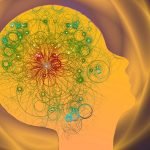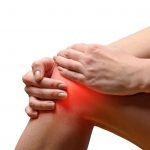A ‘Lifetime’ of Understanding: Getting to the Bottom of a Fibromyalgia Case Can Require Repeated Attempts at Help
Joseph Kellerstein, DC, ND
One of the more frequent problems seen in general practice, fibromyalgia is characterized by weakness, pain and stiffness together with highly tender localized points in the upper limbs, trapezius and dorsal areas.
Having been in practice as a chiropractor since 1981 and an ND since 1984, I believe I have taken the case of hundreds of such sufferers. The fatigue and pain become the focus of their lives. Perhaps the most debilitating part of this disease is the deficiency of validation it creates. The label “fibromyalgia” doesn’t strike fear nor generally arouse sympathy until one becomes intimately familiar with its devastating results. I have seen (when the label wasn’t as high profile) lost careers and marriages simply because one could not proudly display an insurance-acceptable diagnosis. Without this social stamp, the patient simply did not have the right to be unproductive and unreliable, and so was without benefits and without compassion. It’s amazing how lack of validation rises to become the chief complaint.
On the flip side, since its meteoric rise to public prominence coupled with the continued lack of useful knowledge, fibromyalgia has become a huge market. ‘New’ miracle products and treatments are exploding in number. Googling “fibromyalgia” gives a quick six million hits. There are many experts, many theories, personal stories of triumph … but no reliable results.
I know how negative my tone is. Yes, this focused activity and higher profile are more likely to become productive of some usable result. I should be viewing this as the beginning of a conscious evolution toward answers and not just focusing on the bottom-feeding marketers that proliferate.
These are just the ramblings of an aging ND who is bitter because so few are looking to the true gems already available to us.
Success Can Require More Than One Attempt
Homeopathy and dietary management offer some amazing results to those practitioners willing to take a careful case, diligently investigate the literature and not give up sculpting the case because their first few prescriptions are incorrect.
Practitioners suffer a common fear: “I need to get a result quickly, or the patient will leave.” This nonsense often is the drive behind prescribing a botanical, nutraceutical buffet; and then, of course, dessert is the “all-natural pain killer and sedative.” This is not naturopathic medicine. It is substituted allopathy, and it rarely works well.
When that first attempt at homeopathy fails, the beads of sweat on the back of the neck rise and fear takes over. OK, one more try. That fails as well, and out comes the combination remedy followed quickly by the usual cookbook protocols. Then the patient leaves because he or she sees the doctor dangling on the end of his own rope.
In real life, understanding a person takes a lifetime. Even great psychologists will take months to come to a deep comprehension of a patient’s problem. Homeopathy is no less demanding. It is our task to sculpt out a reliable case. First, the disease: Do we have the description exact? Do we clearly understand the modalities of the problem and have them prioritized (i.e., which are most determinative)? Then, the patient’s general case: Is he or she very chilly or just mildly so? Are there any contradictions or contrasts to the thermal modality? For example, some remedies are chilly but worse in a warm room and need cool air to sleep well (Lyc). Some are chilly but crave cold drinks, which aggravate (Sil). How sensitive is the patient to the sun or the least draft? What about position or movement, and what is the exact response to these?
We need to carefully listen to the patient, often over several sessions, to be certain of characteristics like these. Once acquired, symptoms need to be verified through questioning.
For homeopathic purposes, remember that we want the state described as it is, especially when the suffering is at its worst. Then the features will be clear. The case will have some kind of form. There is a beginning (etiology), a rise (onset) and a pace for chronic diseases. Seeing this form will often help identify the remedy.
The point here is that building the case is like constructing a house. First, we gather all our materials (symptoms, characteristics) and then we build carefully, watching to see if it follows the plan (materia medica). Then, we wait for the materials to be given (case taking), or dig them up (questioning) like an archaeologist. Like the archaeologist, we need to be patient and dust off each symptom carefully.
Over the years, I have found it necessary to take the position that the initial exam is not over until a good, solid case is evident. This may take many sessions, occasionally years. Normally I prescribe as soon as I have some sufficient evidence for a prescription – usually the first visit. Hahnemann tells us in The Organon that if a case is not clear, prescribing the most indicated remedy will at least increase the clarity to the observing physician. Holding this course will yield unparalleled results.
Case Study
Marie is a 55-year-old lady who walks down the hall using a cane. Her measured steps are punctuated by physical effort and lots of obvious pain. She has a charming smile and soft manner that has been strengthened by determination over the years to counter the reflex grimace that her suffering demands.
Her chief complaint: arthritis in the knees. Beginning in 1990, she woke up one morning and her left knee ‘went out.’ Since then, it has gotten worse. She has had four surgeries on the knee: two arthroscopic, one osteotomy and, finally, a knee replacement. Marie relates that recoveries from the procedures have always been long. In general, although the knee replacement has helped, there is a feeling that the pain has been much worse since the first arthroscopic procedure.
Chronic Case and Medical History
She says: “For years, there has been this incredible pulling down in my knee, like a weight pulling me to the ground so severe it stops my legs from moving. The right knee has a sharp pain that will make me cry out. Stiffness is worse in the morning. Knees are worse before rain or snow [latter is more obvious]. Better in summer … worse in spring and fall. Worse in hot, humid weather. Worse with warm applications.”
- Fibromyalgia: “I ache terribly in my muscles. It all acts up at the same time – both joints and muscles. Hot flushes. I am always hot. Profuse perspiration. It is worse with any exertion. Since a recent D and C, the flushes are worse.”
- Emotional stressors: “Working as an assistant to an executive, I felt like a servant, as if I was being targeted. I was ordered around and got all of the worst jobs. I have always had a problem with taking things personally. I am a pleaser.”
- Sleep: “I am tired at 10p.m. and go to sleep. I wake after 1.5 hours due to knee pain, and become restless. Best sleep is 6a.m. to 8a.m. Dream of snakes occasionally.”
- Grief: In 1979 patient gave birth. Very shortly after, all four parents died. This was followed by hypertension. Soon after, there was a series of three gout attacks.
Assessment
What struck me initially was the idea of great heaviness in the affected part, worse before the snow, slow healing and grief in a menopausal lady. Sepia looked good, so I prescribed Sep 30c bid.
Two weeks later, Marie reported 25% less fatigue. Thinking is sharper. More dreams. No other changes. Assessment: This early on, looks promising. Plan: Continue.
At a follow-up three weeks later: Marie reported that after one week, the knee pain had gotten worse and hurt continuously. Fatigue returned. Patient has been weepy, and very reliant on cool applications, which offer much relief.
Assessment and plan: Sepia had some degree of similitude but not enough to move the pathologies. There are no new symptoms; but the latest, most intense symptoms indicate Puls., so I prescribed Puls 30c bid.
The next follow-up occurred about four weeks later. Marie reported some improvement in stiffness, energy and muscle pain, but it relapsed within two weeks. Now, she feels much worse. “That incredible sense of weight pulling me down; worse before a storm, worse with weather change from warm to cool.” Assessment and plan: A closer simile, but no bull’s-eye. We relapsed to a more intense version of the initial case. The body is trying to tell us that these are the leading indicators; I just can’t find the remedy.
I will spare myself the humiliation of the next eight follow-ups and a similar tale. The symptoms simply talked back to me, saying, ‘nice try, but no cigar.’ That is, no movement in that small cluster of symptoms for more than a week, and if I went up in potency – no result.
Finally, after these wrong prescriptions I sat down again and took stock of what was clear: The intense heaviness. The worse before a snow. The various other atmospheric modalities. I was unclear, so I called the patient and went through it again carefully. As it turned out, she was aggravated with any change of weather, especially warm to cold. A computer search led me to a lovely little Boenninghausen rubric in the Complete Repertory-Heaviness internal, as from a load. I led with this rubric and followed with worse snow air and worse change of temperature; warm to cold. Suddenly, Mercurius became obvious.
It still is not a cure, but for six weeks, there has been steady improvement in all symptoms. And so it goes; successive approximations until even I can see it.
 Joe Kellerstein, DC, ND graduated as a chiropractor in 1980 and as a naturopathic physician in 1984. He graduated with a specialty in homeopathy from the Canadian Academy for Homeopathy, and subsequently lectured there for two years. He also lectured in homeopathy for several years at CCNM; for eight years at the Toronto School of Homeopathic Medicine; and for two years at the British Institute for Homeopathy. Kellerstein’s mission is the exploration of natural medicine in a holistic context, especially homeopathy and facilitating the experience of healing in clients.
Joe Kellerstein, DC, ND graduated as a chiropractor in 1980 and as a naturopathic physician in 1984. He graduated with a specialty in homeopathy from the Canadian Academy for Homeopathy, and subsequently lectured there for two years. He also lectured in homeopathy for several years at CCNM; for eight years at the Toronto School of Homeopathic Medicine; and for two years at the British Institute for Homeopathy. Kellerstein’s mission is the exploration of natural medicine in a holistic context, especially homeopathy and facilitating the experience of healing in clients.










